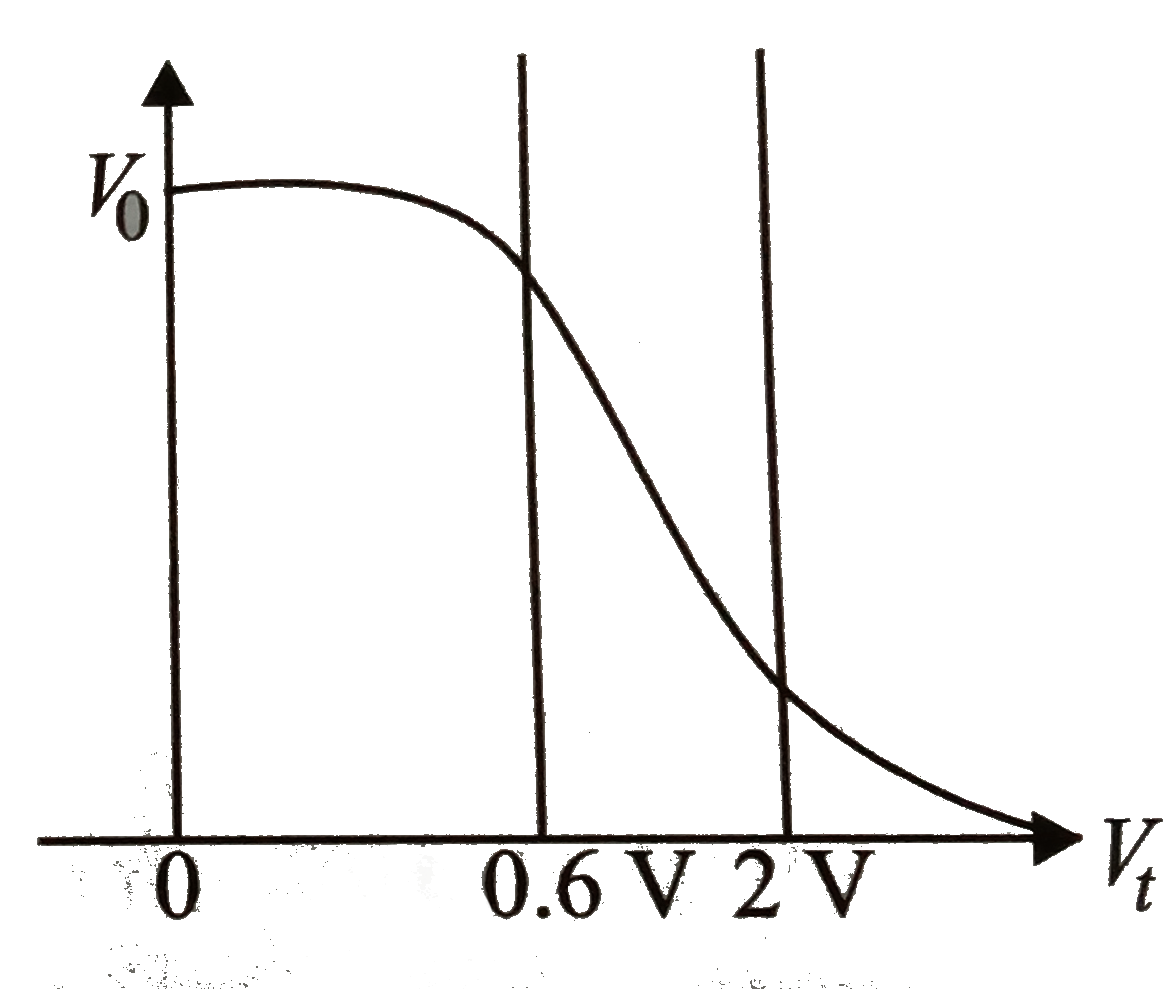Consider an n-p-n transistor with its base - emitter junction forward biased and collector base junction reverse biased . Which of the following statements are true?
Electrons crossover from emitter to collector
Holes move from base to collector
Electrons move form emitter to base
Electrons from emitter mive out to base without going to the collector.
The correct Answer is:A, C
Here emitter-base junction is forward biased i.e., the positive pole of emitter base battery connected to base and its negative pole of emitter, Also, the collector base junction reverse biased, i.e., the positive pole of the collector base battery is connected to collection and negative pole of base.
Thus, electron move from emmiter to bae and crossover from emitter to collector.
Topper's Solved these Questions
- NUCLEIBOOK - NCERT EXEMPLAR ENGLISHCHAPTER - NUCLEIEXERCISE - Very short Anwer type question
14 Videos
- NUCLEIBOOK - NCERT EXEMPLAR ENGLISHCHAPTER - NUCLEIEXERCISE - Long answer type question
10 Videos
- MOVING CHARNGES AND MAGNETISMBOOK - NCERT EXEMPLAR ENGLISHCHAPTER - MOVING CHARNGES AND MAGNETISMEXERCISE - Long Answer Type Questions
7 Videos
- RAY OPTICS AND OPTICAL INSTRUMENTS BOOK - NCERT EXEMPLAR ENGLISHCHAPTER - RAY OPTICS AND OPTICAL INSTRUMENTS EXERCISE - VERY SHORT ANSWER TYPE QUESTIONS
16 Videos
Similar Questions
Knowledge Check
Fig.shows that transfer characteristics of a base biased CE transistor. Which of the following statements are true?
 AAt Vi=1V, it can be used as an amplifierBAt Vi=0.5V, it can be used as a switch turned offCAt Vi=2.5V, it can be used as a switch turned onDAll of these
AAt Vi=1V, it can be used as an amplifierBAt Vi=0.5V, it can be used as a switch turned offCAt Vi=2.5V, it can be used as a switch turned onDAll of these
A p−n junction diode is reverse biased. Then
View SolutionThe transfer characteristics of a base biased common emitter transistor is shown in the figure. Which of the following statements are true?

View SolutionA transistor is used in common emitter mode as an amplifier. Then
(1) the base-emitter junction is forward biased
(2) the base emitter junction is reverse biased
(3) the input signal is connected in series with the voltage applied to the base-emitter junction.
(4) the input signal is connected in series with the voltage applied to the base collector junction.
View SolutionWhen p−n junction diode is forward biased then
View SolutionWhen p−n junction diode is forward biased then
View SolutionIn the following diagram, is the junction diode forward biased or reverse biased ?

View SolutionIn an n-p-n transistor circuit , the collector currents is 10mA . If 95 per cent of the electrons emitted reach the collector, which of the following statements are true?
View Solution
